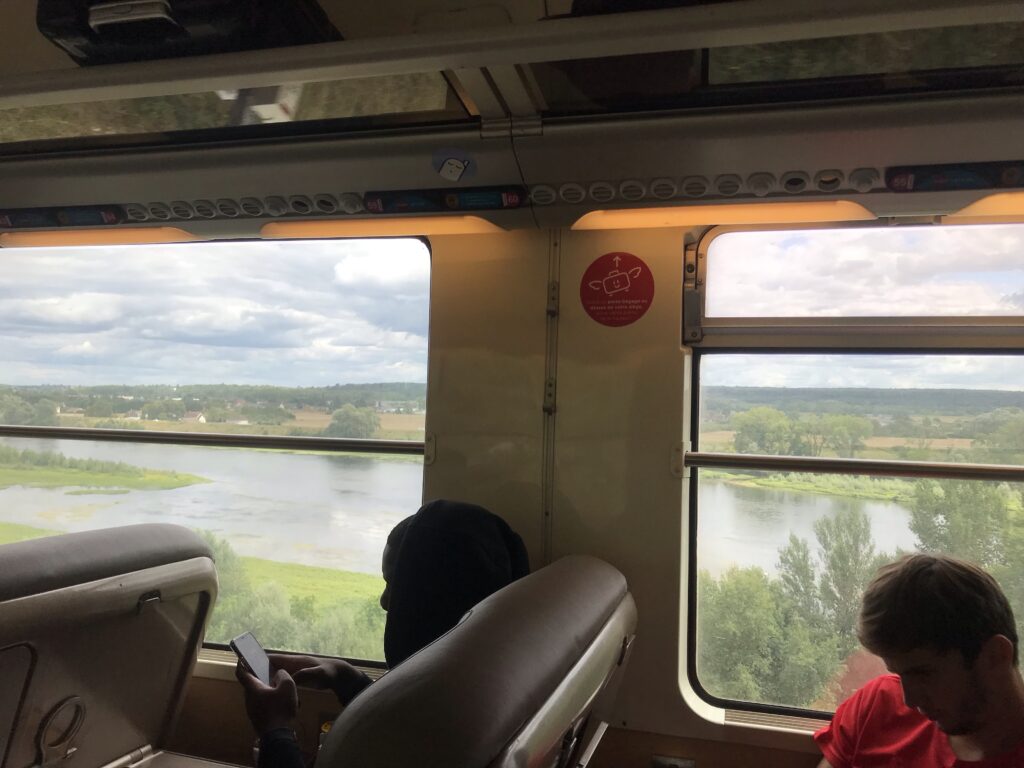France is well-known for its TGVs. But there is a place in my heart for the ‘trains classiques’, the older, long-distance trains that still trundle round the older lines of France’s rail network.
I like that they don’t go very fast. I don’t want to get there quickly today.
I like how the seats are like sofas; ideal for napping.
I like how they purr. There’s a deep whir that I feel in my stomach. I higher pitched whine that wibbles my nostrils. And when someone opens the end-of-carriage sliding doors, the loud waah that washes through the carriage, like an approaching TIE fighter.

I like the big windows (the opposite of the miserable arrowslits you get on Cross Country train services in the UK).
I like all the unhurried journeys I’ve taken on these trains before, from one regional town to another. Often on holiday.
I like the system of regionally-subsidised train networks (that these trains usually run on), which help keep trains running to remote parts of France.

I like the ample bike storage space – two reservable spots per carriage.
I like how these routes are usually cheaper than the TGV.
And I like how these older trains ply a sort of parallel, older network, of places in between or far from the big TGV stations. It somehow feels like more of an adventure.
Want to ride on a train classique? Your best bet is to book a journey between destinations on the SNCF Intercités network – these are the trunk routes where TGVs don’t operate. Or, as we are doing today, travel on the Ouigo Trains Classiques network (these travel between Paris and Lyon and Paris and Nantes – both also served by TGV trains, but the Ouigos classique travel down the old slower routes.
Read more about the train classique rolling stock.

